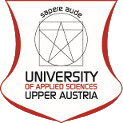BioBoost: Biomass Based Energy Intermediates Boosting Biofuel Production

Project duration from 2012-01-01 to 2014-12-31
Funded by: EU
https://bioboost.eu
Biomass currently accounts for almost two thirds of renewable energy generation in Europe, mostly in the form of pellets, charcoal and wood for heating homes. Sustainably sourced agricultural and forestry by-products such as straw, tree cuttings and surplus manure, as well as biodegradable residential and food industry waste, can also be used to produce other forms of energy, from biofuels for transport to bio-coal and bio-gas for electricity generation. However, getting biomass from ‘field to fuel’ economically has been one of the biggest impediments to more widespread use.
Working in the EU-funded BIOBOOST project, academic and industrial partners from six EU countries have addressed the main technological and logistical challenges, identifying the most promising biomass feedstock (sources) and the best ways of processing it into bio-energy products. They have also devised an innovative logistics system to reduce transport costs.
“We studied the main technologies for the conversion of dry and wet residual biomass and waste to intermediate energy carriers, and identified how best these can be implemented close to sources of biomass feedstock to create fuels that can either be used locally or transported more efficiently and cost-effectively for further refinement,” explains Nicolaus Dahmen, project coordinator at the Karlsruhe Institute of Technology in Germany.
The BIOBOOST team optimised approaches for turning farm and forestry-sourced straw and wood cuttings, for example, into a useful medium for fuel. They applied catalytic pyrolysis, which uses high temperatures to quickly decompose organic matter in the absence of oxygen. And they researched hydrothermal carbonisation, which efficiently replicates the natural process of coal generation, to create synthetic bio-coal for heat and power generation from organic municipal waste.
Bio-massive challenges
“The problem of biomass is that it is usually not very energy dense, creating substantial transportation issues. Straw, for example, has an energy density of about two gigajoules per cubic metre, but through pyrolysis straw can be turned into bio-crude oil with an energy density of 20 to 30 gigajoules per cubic metre, making it much more efficient to transport,” Dahmen says.
The BIOBOOST team’s proposed logistics solution therefore focuses on setting up pre-conversion pyrolysis and hydrothermal carbonisation plants close to large sources of biomass feedstock, such as at the heart of agricultural and forestry regions, where organic residues can be turned into intermediate energy carriers.
Using agricultural, forestry and demographic data from across Europe, the researchers carried out technical, economic and environmental assessments of areas with large supplies of usable feedstock, and created advanced simulations to identify the optimal locations of pre-conversion plants and plot logistics supply chains. In addition, they looked at how the chemical by-products of fuel conversion can provide added-value and economic benefits.
“This approach would create new industries in agricultural regions, and we can envision farmers, for example, participating in biofuel pre-conversion facilities just as they have invested in the sugar processing industry. On the other hand, further conversion and refinement of intermediate biofuels would probably be conducted close to existing hydrocarbon refineries where the required infrastructure is already in place,” the coordinator says.
Much of the technology unpinning the BIOBOOST approach has been proven viable. Project partner AVA-CO2, a German SME, plans to begin commercialising a pre-conversion system based on hydrothermal carbonisation, for example. However, even if the highly efficient processing and logistics system proposed by BIOBOOST is implemented widely, the cost of biofuels relative to fossil fuels is likely to remain a challenge.
“The unavoidable problem with biomass residues is that they have to be processed before they can be used for fuel or electricity, putting them at an economic disadvantage unless the cost of fossil fuels increase or sources become more scarce,” Dahmen explains. “Nonetheless, combined with the expanding use of solar and wind power for electricity production, biomass certainly has an important role to play in the production of alternative carbon-based fuels that will contribute to the sustainability of Europe’s energy future.”
We are happy to announce that the BioBoost project which has been completed in July 2015 is now also formally finished. BioBoost is focussed on boosting bioenergy through biomass-based energy intermediates using a de-centralized infrastructure for conversion of biological residues to bio-oils. HEAL developed a simulation and optimization software for optimizing plant locations, capacities and logistics.
The resulting software tool is now available as an add-on for HeuristicLab.
A short summary on the project has been published on the EU commission websites: "Biomass for for energy: from field to fuel" and on the Horizon2020 websites
The main goals and challenges as well as results are explained in a 10-minute long documentary video on BioBoost.


